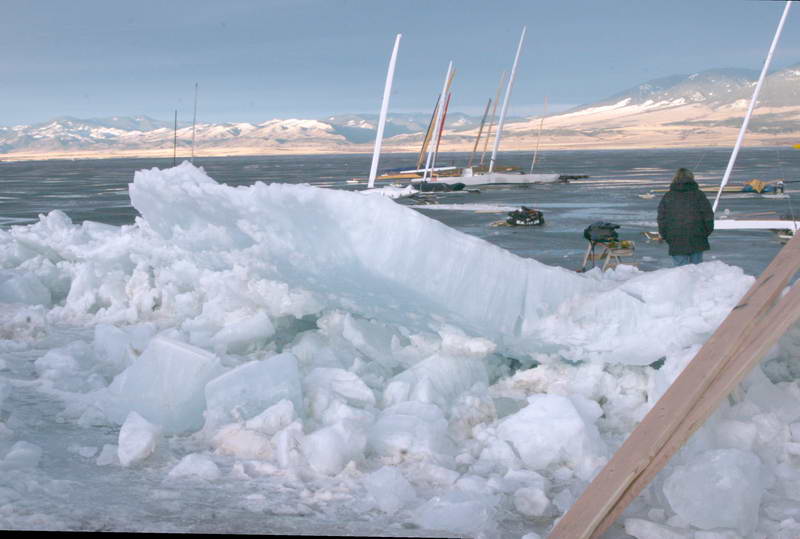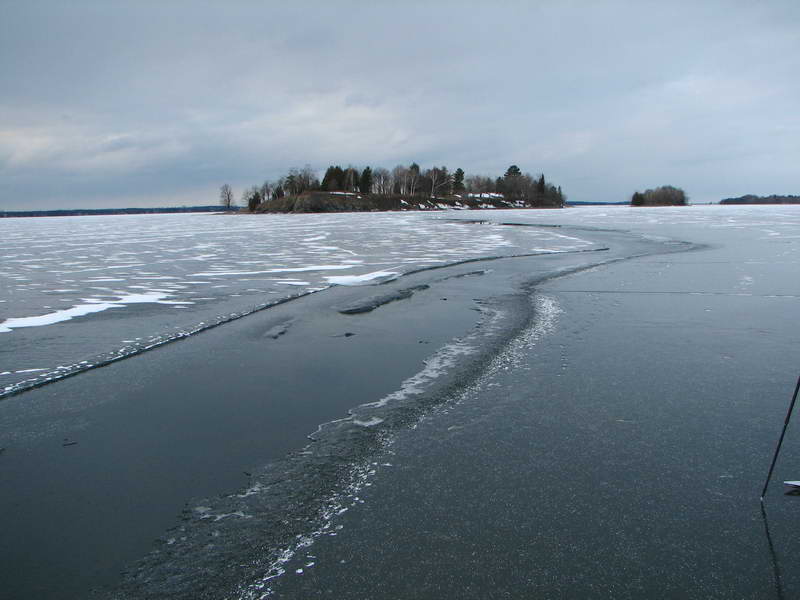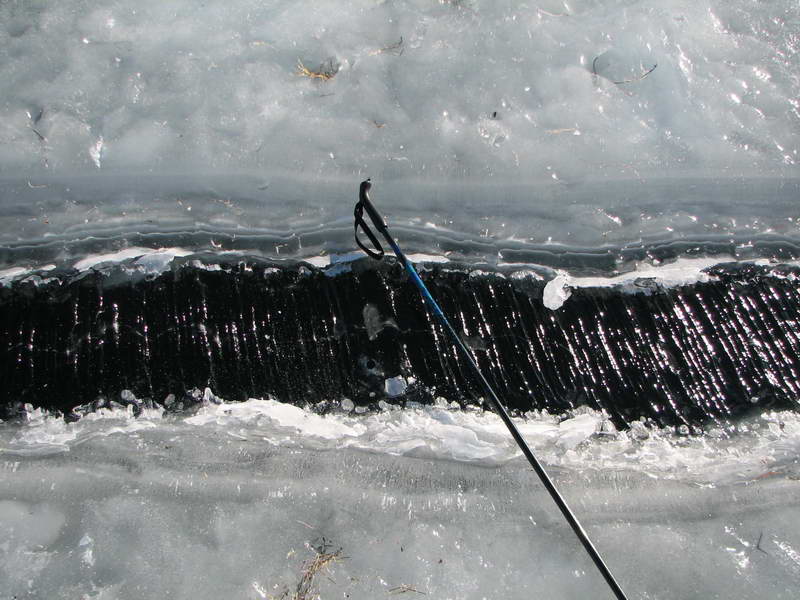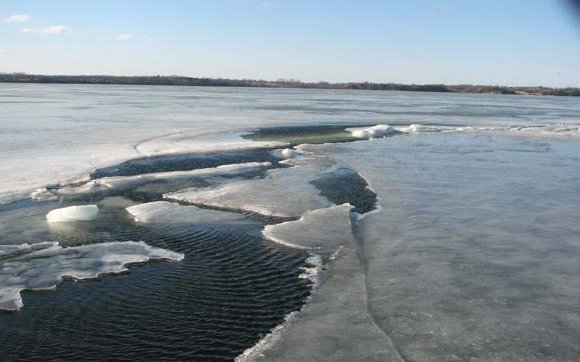Pressure Ridge Detail
Once ridges form they absorb the compression forces that develop when the ice warms up. On ice less than a few inches thick the ice usually forms contraction cracks when it cools off. These freeze over night. The next day the ice warms and pushes the plates further into the ridge. In this way the ice sheet ratchets itself toward the ridges and, sometimes, onto the shore.
The tendency to start at points of land means that ridges often occur at roughly the same place every year. Often two or three ridges (sometimes more) will radiate off a point. Two of these are likely to be a bay mouth ridge coming from each side and the third heads for a ridge on the other side of the lake (or, on big ice, connects with the ridge system out in the lake).
When multiple ridges come together at a point they often create an very disrupted area that can be especially hazardous to cross. If you are traveling around a point, expect this problem. The best options are usually to stay well off shore from the point (1/4 mile?) so the ridges can be crossed one at a time or to go ashore before you get to the point and get around the point on shore before going back onto the ice. In the middle of big ice sheets (3+ miles) on typical lakes the expansion stress creates ridges every ½ to 1-1/2 miles in any direction you travel.
Round lakes and lakes with gently sloping shorelines are less prone to ridges than lakes with lots of points and a steep shoreline the ice can easily push against. Gently sloping shorelines can develop large ice build ups as the ice ratchets toward the shore over many cooling/warming cycles.
 15" ice pushed up on the sloping shore of Canyon Ferry Reservoir (MT)
15" ice pushed up on the sloping shore of Canyon Ferry Reservoir (MT)
Ridges take a beating in thaws. Warm wind erodes the ice standing above ice sheet. Any thin ice areas melt and the wind riles and warms the water causing the underwater ice to melt more quickly. Drain holes at the ridge can contribute to this further. Sometimes the ridge ends up as nothing but a long stretch of open water. Often they get part way through this process and have intermittent open areas of all sizes until enough cold weather occurs to freeze things back together.
 Melted Ridge scale: about 8 feet across. Most of the melting took place in a two day, windy warm period.
Melted Ridge scale: about 8 feet across. Most of the melting took place in a two day, windy warm period.
Ridges can become inactive. Often a parallel ridge will form reasonably close to the original. They generally completely refreeze leaving a line of blocks (ice sharks) on what otherwise is sound ice: a pain for skaters and a hazard for sailors, snowmobilers and anyone else going fast over the ice.
 Spring tectonic crack about 8" wide, early in the morning before the dark overnight ice spanning the crack is crushed by the warming ice.
Spring tectonic crack about 8" wide, early in the morning before the dark overnight ice spanning the crack is crushed by the warming ice.
In the spring, after the ice has been deeply thawed, the the expansion and contraction function of ridges may be taken over by what we call 'spring tectonic cracks'. The separate several inches overnight, often forming an inch or more of overnight ice. During the day they close, often with enough pressure to cause one side to rise a few inches above the other side.
Other ridges stay active during the spring thaw, generally ending up as a melted ridge that is difficult or impossible to cross.
 An uncrossable ridge, mid March, Lake Champlain
An uncrossable ridge, mid March, Lake Champlain
